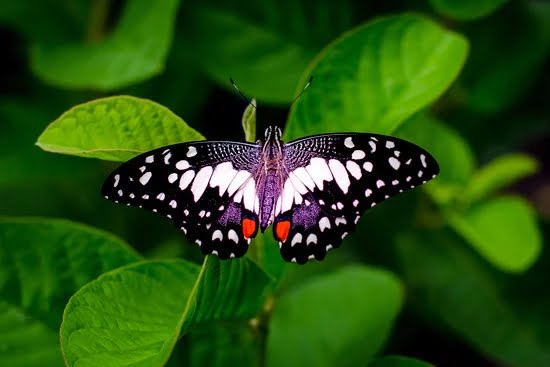Looking for ideas for landscaping along a fence? Landscaping along a fence can transform your yard, providing beauty and privacy. In this article, we’ll explore various landscaping ideas, from the best types of plants to adding decorative elements and creating a natural barrier for privacy. Whether you’re looking for low-maintenance options or wildlife-friendly landscaping, there are plenty of ways to enhance your fence line.
When it comes to choosing the right plants for landscaping along a fence, it’s important to select those that thrive in this environment. We’ll discuss the best types of plants, trees, and shrubs that not only survive but also provide the most aesthetic appeal. From flowering vines to evergreen shrubs, there are numerous options to consider when beautifying your yard’s perimeter.
In addition to plant selection, we’ll also explore the concept of vertical gardening. By utilizing the space along your fence to grow climbing plants, vines, and trellises, you can create a visually stunning effect. Furthermore, we’ll delve into the idea of incorporating hardscaping elements like stone pathways and decorative fencing to complement your landscaping design.
Adding Privacy
When it comes to landscaping along a fence to create privacy and seclusion in your yard, there are several options to consider. Below are some landscaping ideas that can help you achieve the perfect natural barrier between your yard and the outside world:
1. Planting tall hedges: Consider planting tall hedges such as arborvitae, Leyland cypress, or privet along the fence line to create a dense, green barrier that provides privacy and sound insulation.
2. Installing a trellis: A trellis can be a great way to add vertical interest while also creating privacy. Plant climbing vines such as clematis, wisteria, or climbing roses on the trellis for a beautiful and natural screen.
3. Creating a living wall: Build planter boxes along the fence and fill them with tall grasses, bamboo, or ornamental plants to create a living wall that adds both beauty and privacy to your outdoor space.
In addition to these landscaping ideas, adding decorative fencing or installing outdoor lighting can further enhance the overall aesthetic appeal of your private sanctuary. By incorporating these elements into your landscape design, you can create a welcoming ambiance while enjoying the seclusion and privacy of your own backyard.
Vertical Gardening
Choosing the Right Plants for Vertical Gardening
When it comes to vertical gardening along a fence, selecting the right plants is crucial. Climbing plants and vines such as clematis, honeysuckle, and climbing roses are excellent choices for adding height and visual interest. Additionally, incorporating trellises and arbors provides support for climbing plants to grow vertically, creating a beautiful natural backdrop along the fence.
Maximizing Space With Vertical Gardening
Vertical gardening allows homeowners to maximize their space by using the fence as a canvas for growing plants. By utilizing hanging pots and wall-mounted planters, you can add greenery to your fence line without encroaching on precious yard space. This method not only adds aesthetic appeal but also creates a lush environment that brings life to an otherwise overlooked area in the yard.
Creating a Green Screen With Vertical Gardening
A well-executed vertical garden can act as a green screen, offering privacy while enhancing the overall beauty of the outdoor space. By strategically planting and training climbing plants and vines along the fence, you can create a natural barrier that provides seclusion and tranquility. This innovative landscaping idea not only adds charm to your outdoor area but also serves a practical purpose in defining boundaries and concealing unattractive views.
Incorporating Hardscaping
When it comes to landscaping along a fence, incorporating hardscaping elements can enhance the overall design and aesthetic appeal of your outdoor space. From stone pathways to decorative fencing, there are various ways to complement your landscaping design with hardscaping features.
Stone Pathways
One popular way to incorporate hardscaping along a fence line is by creating stone pathways. These pathways not only add visual interest but also provide functionality by allowing easy access to different areas of your yard. Whether you opt for natural stone or pavers, a well-designed pathway can create a cohesive look and serve as a focal point in your landscaping design.
Retaining Walls
Another option for hardscaping along a fence is the use of retaining walls. These walls not only add depth and dimension to your landscape but also help prevent soil erosion in sloped areas. Retaining walls can be made from various materials such as natural stone, bricks, or concrete blocks, offering both structural support and decorative appeal.
Decorative Fencing
In addition to traditional fencing, consider incorporating decorative elements into the fence designs. This could include adding lattice panels for climbing plants or choosing ornamental metal fencing for an elegant touch. By integrating decorative fencing into your landscape design, you can create a visually appealing barrier that complements the surrounding plants and adds character to your outdoor space.
Incorporating hardscaping elements such as stone pathways, retaining walls, and decorative fencing can add depth, texture, and visual interest to the landscape along a fence. When combined with carefully chosen plants and other landscaping features, these hardscaping elements contribute to a cohesive and attractive outdoor setting.
Seasonal Interest
One of the key factors to consider when landscaping along a fence is choosing plants that offer visual interest throughout the year, providing options for every season. This not only ensures that your fence line looks appealing no matter the time of year, but it also adds variety and color to your outdoor space. When considering plants for landscaping along a fence, it’s essential to select a mix of evergreen and deciduous plants to ensure year-round appeal.
For spring, consider planting flowering shrubs such as lilacs, azaleas, or hydrangeas for bursts of color and lush foliage. These types of plants will bring vibrant colors and sweet scents to your outdoor space as they bloom in the spring. Additionally, consider bulbs like tulips and daffodils for an extra pop of color during this season.
During the summer months, opt for heat-tolerant plants like ornamental grasses, coneflowers, or black-eyed Susans. These plants thrive in the warm weather and add a touch of whimsy with their swaying movement in the breeze. For fall interest, consider trees or shrubs with colorful foliage such as maple trees or burning bush. These plants will provide stunning shades of reds, oranges, and yellows as the leaves change, adding warmth and coziness to your backyard.
In preparation for winter, include evergreen varieties like pine trees or holly bushes for continuous greenery even when other plants have gone dormant. This will ensure that your fence line remains visually appealing even during the colder months. By carefully selecting a variety of plant species for each season, you can achieve year-round visual interest along your fence line while creating an inviting and lively outdoor space.
| Season | Plant Suggestions |
|---|---|
| Spring | Lilacs, Azaleas, Hydrangeas, Tulips, Daffodils |
| Summer | Ornamental Grasses, Coneflowers & Black-eyed Susans |
| Fall | Maple Trees & Burning Bush Shrubs |
| Winter | Pine Trees & Holly Bushes |
Low-Maintenance Options
Landscaping along a fence can be a great way to enhance the overall look of your outdoor space while requiring minimal upkeep. There are several low-maintenance landscaping options that can add beauty to the fence line without demanding too much time and effort from homeowners.
One simple yet effective idea is to install a row of decorative rocks or pebbles along the base of the fence. This not only provides a clean and polished look but also helps suppress weed growth, reducing the need for regular maintenance.
Another low-maintenance option for landscaping along a fence is to plant ornamental grasses. These hardy plants come in a variety of colors, textures, and sizes, making them an excellent choice for adding visual interest without extensive care requirements. Ornamental grasses are also known for their resilience, making them suitable for different climate conditions and soil types.
Additionally, incorporating mulch into your landscaping design can help reduce weed growth and retain soil moisture, cutting down on the need for frequent maintenance. Using mulch around trees, shrubs, and flower beds along the fence line not only provides a neat and uniform appearance but also offers practical benefits in terms of preserving plant health.
| Low-Maintenance Landscaping Option | Main Benefits |
|---|---|
| Decorative Rocks/Pebbles | Suppresses weed growth; reduces maintenance |
| Ornamental Grasses | Visual interest; resilient; low care requirements |
| Mulch | Weed suppression; soil moisture retention; enhances plant health |
Wildlife-Friendly Landscaping
There are many eco-friendly landscaping options for creating a habitat along your fence that is attractive to birds, butterflies, and other wildlife. By incorporating specific plants and design elements into your landscaping, you can create a welcoming environment for various types of animals while also adding beauty to your outdoor space.
Here are some ideas for landscaping along a fence that are attractive to wildlife:
- Plant native shrubs and flowers: Native plants are typically the best choice for attracting wildlife since they have coevolved with local animals and insects. Some great options include butterfly bushes, coneflowers, and milkweed for butterflies, as well as berries and seed-producing plants for birds.
- Create a water feature: A small pond or birdbath can attract birds and other animals looking for water. Consider adding a water feature near your fence line to provide a source of hydration for wildlife in your area.
- Install birdhouses and feeders: Birds are always on the lookout for places to nest and find food. By incorporating birdhouses and feeders into your landscaping design, you can encourage different bird species to visit your yard.
- Avoid chemical pesticides: Using chemical pesticides in your yard can harm the natural ecosystem and discourage wildlife from visiting. Instead, opt for natural pest control methods or tolerant plants that require fewer chemicals.
By considering these wildlife-friendly landscaping ideas, you can create a vibrant habitat along your fence that attracts birds, butterflies, and other creatures while also enhancing the overall beauty of your outdoor space. Whether you have a small garden or a large yard, there are plenty of ways to make your landscape inviting to wildlife.
Lighting and Decor
In conclusion, there are countless ideas for landscaping along a fence that can enhance the beauty and functionality of your outdoor space. By carefully choosing the right plants, considering privacy, incorporating vertical gardening, hardscaping, and seasonal interest, as well as opting for low-maintenance and wildlife-friendly options, you can create a stunning landscape along your fence line.
In addition to planting trees and shrubs, it’s essential to consider the visual appeal that lighting and decorative elements can bring to your landscaping design. Incorporating soft lighting along the fence can create a warm ambiance in the evenings and make your outdoor area more inviting. Furthermore, adding decorative elements such as ornamental pieces or sculptural features can add personality to your yard and make it visually appealing.
By combining these various landscaping ideas along with careful consideration of lighting and decor elements, you can transform the perimeter of your property into a beautiful and welcoming space that adds value to your home. Whether you’re looking to create a private sanctuary or simply enhance the aesthetics of your outdoor area, landscaping along a fence offers endless possibilities for creating an inviting and attractive space.
Frequently Asked Questions
How Do You Landscape Next to a Fence?
When landscaping next to a fence, it’s important to consider the space available and the amount of sunlight the area receives. You can create a visually appealing landscape by adding a combination of plants, such as shrubs, vines, and flowers.
It’s best to choose plants that won’t overwhelm the fence or grow too tall and block the view. Adding mulch or rocks around the base of the plants can help control weeds and make maintenance easier.
What Is the Best Plant to Grow Along a Fence?
The best plant to grow along a fence depends on your specific preferences and needs. Some popular options include climbing roses, clematis, jasmine, or honeysuckle for their ability to cover the fence with beautiful blooms and foliage.
If you prefer a more low-maintenance option, consider planting ornamental grasses or evergreen shrubs. Ultimately, it’s important to select plants that will thrive in your local climate and soil conditions.
How Can I Make My Side Yard Look Nice?
To make your side yard look nice, start by cleaning up any clutter and ensuring that the area is well-maintained. Consider adding potted plants or hanging baskets to bring some greenery into the space without taking up too much room.
Installing a pathway with pavers or stepping stones can add visual interest while also making it easier to navigate the area. Additionally, creating a small seating area with comfortable outdoor furniture can turn your side yard into a cozy outdoor retreat.

Welcome to my gardening blog! I am passionate about plants and enjoy sharing my knowledge and experiences with others. In this blog, I will write about everything related to gardening, from tips on how to get started to updates on my own garden projects.





